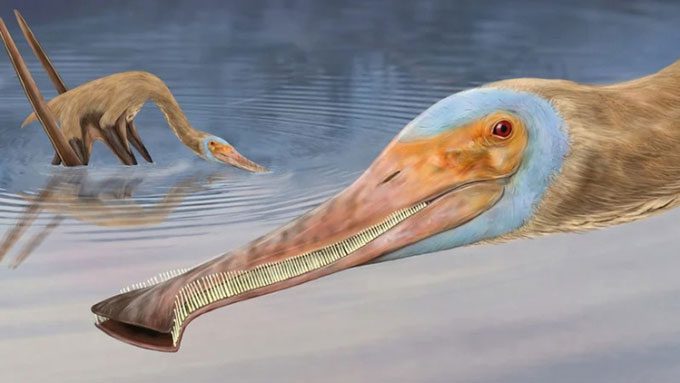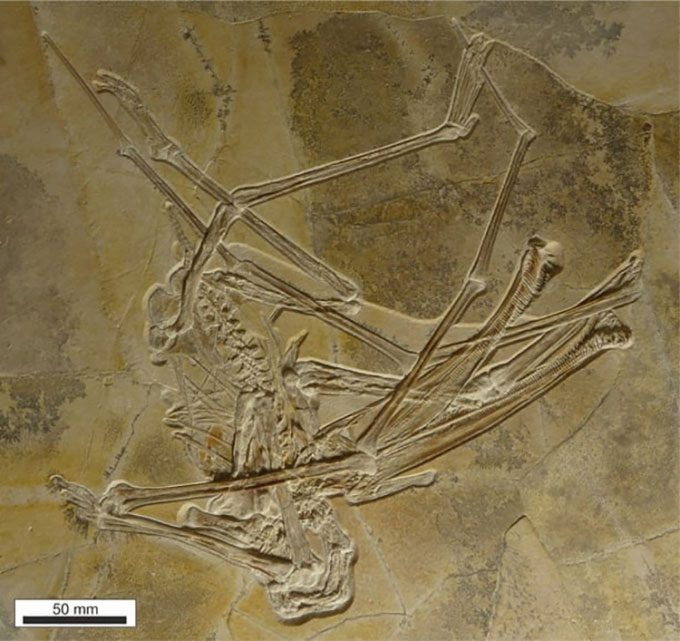A complete skeleton of a bizarre flying lizard that lived 152 million years ago has been unexpectedly discovered by scientists.

Simulation of the flying lizard Balaenognathus maeuseri. (Photo: University of Portsmouth).
According to a report published in the journal Palaontologische Zeitschrift, a research team from the UK, Germany, and Mexico – led by Professor David Martill from the University of Portsmouth – has named the new species Balaenognathus maeuseri and determined that it belongs to the family of flying lizards Ctenochasmatidae, which lived from the late Jurassic to the early Cretaceous period, RTE reported on January 25.
“Balaenognathus” means whale mouth (based on filter-feeding behavior), while “maeuseri” honors co-author Matthias Mauser, who passed away during the research.
The fossil of this creature was accidentally discovered in a limestone quarry in Bavaria, Germany, while Martill and his colleagues were searching for crocodile bones.

Fossil of Balaenognathus maeuseri. (Photo: University of Portsmouth).
“The nearly complete skeleton was found in a very fine layer of limestone, which helped preserve the fossil well. It reveals that the jaw of this flying lizard is very long and lined with hundreds of small teeth (about 480) with alternating gaps resembling a comb,” Martill stated.
The researcher further described that the jaw of Balaenognathus maeuseri is curved upward like that of today’s avocets but flares out at the end like a spoon. Notably, some teeth have hooks at the end, a feature never seen in any previous flying lizard species.
Balaenognathus maeuseri may have waded through shallow waters during the late Jurassic period to suck in water containing small shrimp and paddle-footed crustaceans, subsequently using its teeth to squeeze out excess liquid, trapping the prey in its mouth.
The fossil of Balaenognathus maeuseri is currently on display at the Bamberg Natural History Museum in Germany.


















































